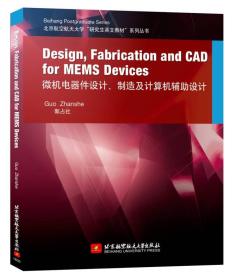
微机电器件设计、制造及计算机辅助设计/京航空航天“研究生英文教材”系列丛书
¥ 22.4 3.4折 ¥ 65 全新
仅1件
河北保定
认证卖家担保交易快速发货售后保障
作者郭占社 著
出版社北京航空航天大学出版社
出版时间2016-06
版次1
装帧平装
货号c2
上书时间2024-10-11
- 最新上架
商品详情
- 品相描述:全新
图书标准信息
- 作者 郭占社 著
- 出版社 北京航空航天大学出版社
- 出版时间 2016-06
- 版次 1
- ISBN 9787512421097
- 定价 65.00元
- 装帧 平装
- 开本 16开
- 纸张 胶版纸
- 页数 272页
- 丛书 京航空航天“研究生英文教材”系列丛书
- 【内容简介】
-
Thisbookfirstlyintroducesthepertinentfundamentaltheory,importantmaterialandfabricationprocessofmicroGelectromechanicalsystems.Basedonthesetheories,thedesignruleandimportantengineeringexamplesaredescribedindetail.Then,manyengineeringapplicationsforMEMSincludingtheaccelerationmeasurement,theangularspeedmeasurementandthepressuremeasurementareintroduced.Finally,finiteelementmethodisintroducedinordertoprovethecorrectnessofthedesign.Thisengineeringapplicationofsimulationincludesthestaticandmodalanalysisofthebeam,capacitanceanalysis,thermalGstructureanalysisofthedeviceandfatigueanalysisetc.Itcanbeselectedasthereferencetothepostgraduates,undergraduatesandpertinentengineeringstaffwhoseresearch directionsareinstrumentationscienceandtechnology,controlscienceandengineering,mechanicalengineeringetc.
- 【目录】
-
Chapter1 Introduction ………………………………………………………………………… 1
1.1 ConceptofMEMS ……………………………………………………………………… 1
1.2 DevelopmentofMEMS ………………………………………………………………… 4
1.3 MEMSCAD …………………………………………………………………………… 9
Chapter2 BasictheoryofMEMS …………………………………………………………… 12
2.1 TheoryofelectrostaticMEMScombactuators …………………………………… 12
2.1.1 Introduction ……………………………………………………………………… 12
2.1.2 Operatingprinciples …………………………………………………………… 13
2.1.3 Platecapacitortheoryinidealcondition ……………………………………… 14
2.1.4 ThemodifiedmodelofMEMSplatecapaciator ……………………………… 17
2.1.5 Calculationofelectrostaticcombdrivingforceinidealsituation …………… 24
2.1.6 Weakcapacitancedetectionmethodofelectrostaticcombdrive …………… 26
2.2 RelevanttheoreticalcalculationsfortheMEMScantileverbeam ………………… 34
2.2.1 Introduction ……………………………………………………………………… 34
2.2.2 Theoreticalcalculationmethodforcantileverbeam ………………………… 35
2.2.3 RelevanttheoreticalcalculationofaxialtensileandcompressiveonsingleGend
clampedbeams ………………………………………………………………… 36
2.2.4 RelatedtheoreticalcalculationsofdoubleGendclampedbeamsaxialtension
andcompression ………………………………………………………………… 40
2.3 MembranetheoryofMEMS ………………………………………………………… 47
2.3.1 Theoryofclampedaroundcirculardiaphragm ………………………………… 48
2.3.2 Theoryofclampedaroundrectangularflatdiaphragm ……………………… 49
References …………………………………………………………………………………… 52
Chapter3 MEMSmaterials …………………………………………………………………… 53
3.1 Monocrystallinesilicon ……………………………………………………………… 53
3.1.1 Introduction ……………………………………………………………………… 53
3.1.2 Crystalorientationofmonocrystallinesilicon ………………………………… 55
3.2 Polycrystallinesilicon ………………………………………………………………… 64
3.3 Silica …………………………………………………………………………………… 66
3.4 Piezoelectricmaterials ………………………………………………………………… 67
3.4.1 Piezoelectriceffectandinversepiezoelectriceffectofmaterials …………… 67
3.4.2 Quartzcrystal …………………………………………………………………… 68
3.4.3 Piezoelectricceramics …………………………………………………………… 73
3.5 OtherMEMSmaterials ……………………………………………………………… 75
3.6 Summary ……………………………………………………………………………… 76
Chapter4 MEMStechnology ………………………………………………………………… 77
4.1 MEMSlithographyprocess ………………………………………………………… 78
4.2 KeytechnologyofMEMSlithographyprocess …………………………………… 80
4.2.1 Wafercleaning …………………………………………………………………… 80
4.2.2 Siliconoxidation ………………………………………………………………… 80
4.2.3 Spincoatingprocess …………………………………………………………… 87
4.2.4 Prebaking ………………………………………………………………………… 90
4.2.5 Exposure ………………………………………………………………………… 92
4.2.6 Development ……………………………………………………………………… 94
4.2.7 Hardening ………………………………………………………………………… 96
4.2.8 FabricationoftheSiO2 window ………………………………………………… 97
4.3 SubsequentprocessofMEMS ……………………………………………………… 98
4.3.1 Bulksilicontechnology ………………………………………………………… 98
4.3.2 Surfacesiliconprocess ………………………………………………………… 103
4.3.3 LIGAtechnology ……………………………………………………………… 104
4.3.4 Sputteringtechnology ………………………………………………………… 105
4.3.5 LiftGoffprocess ………………………………………………………………… 107
4.4 Filmpreparationtechnology………………………………………………………… 107
4.5 Bondingprocess ……………………………………………………………………… 108
4.5.1 Anodicbondingprocess………………………………………………………… 109
4.5.2 SiliconGsilicondirectbonding ………………………………………………… 110
4.5.3 Metaleutecticbonding ………………………………………………………… 113
4.5.4 Coldpressureweldingbonding ……………………………………………… 114
4.6 Engineeringexamplesofcombinationformultipleprocessestofabricatethe
MEMSdevice ………………………………………………………………………… 115
4.6.1 Introduction …………………………………………………………………… 115
4.6.2 EngineeringexampleoffabricationprocessforresonantMEMSgyroscope
…………………………………………………………………………………… 115
4.6.3 EngineeringexampleofelectromagneticmicroGmotorproductionprocess
…………………………………………………………………………………… 118
4.7 Summary ……………………………………………………………………………… 124
References…………………………………………………………………………………… 125
Chapter5 Frictionwearandtearundermicroscale ……………………………………… 126
5.1 OffGchiptestingmethodformicrofriction ………………………………………… 127
5.1.1 MicroGtribologytestwiththepinGonGdiscmeasuringmethod ……………… 127
5.1.2 MicroGtribologytestwithAFM ……………………………………………… 128
5.1.3 MicroGtribologytestwithspecialmeasuringdevice ………………………… 130
5.2 OnGchiptestingmethodformicrofriction ………………………………………… 132
5.2.1 OnGchiptestingmethodactuatedbyelectrostaticforce …………………… 132
5.2.2 OnGchipmicroGfrictiontestingmethodusingthemechanismcharactersof
thebimorphmaterial…………………………………………………………… 139
5.3 ExampleofthedesignforanonGchipmicroGfrictionstructure ………………… 141
5.3.1 Structureandworkingprinciple ……………………………………………… 141
5.3.2 Calculationofpertinenttheory ……………………………………………… 142
5.3.3 Technologicalanalysisofstructuraldesign ………………………………… 148
5.3.4 Testingresultsanddataanalysis……………………………………………… 152
5.3.5 ResearchandtestofwearproblemofMEMSdevices ……………………… 161
5.4 Summary ……………………………………………………………………………… 165
References…………………………………………………………………………………… 165
Chapter6 MEMStestingtechnologyandengineeringapplication ………………………… 169
6.1 Accelerationmeasurementandcorrespondingsensors …………………………… 169
6.1.1 Workingprincipleoftheaccelerationsensorandtheclassification ……… 170
6.1.2 Capacitivesiliconmicromechanicalaccelerometer …………………………… 172
6.1.3 Piezoresistivesiliconmicromechanicalaccelerometer ……………………… 173
6.1.4 Piezoelectricmicromechanicalaccelerometer ………………………………… 174
6.1.5 ResonantsiliconMEMSaccelerometer ……………………………………… 175
6.2 Angularspeedmeasurementandcorrespondingsensors ………………………… 177
6.2.1 Workingprinciple ……………………………………………………………… 177
6.2.2 DevelopmentofMEMSgyroscope …………………………………………… 178
6.2.3 Classificationofmicromechanicalgyroscope ………………………………… 188
6.3 Pressuremeasurementandcorrespondingsensors ……………………………… 190
6.3.1 Workingpincinple ……………………………………………………………… 190
6.3.2 Resonantsiliconmicromechanicalpressuresensoranditsdevelopment … 193
6.4 MeasurementofmicroGtorque ……………………………………………………… 198
6.4.1 Introduction …………………………………………………………………… 198
6.4.2 Workingprincipleofnoncontactmethod …………………………………… 199
6.4.3 Theoreticalcalculation ………………………………………………………… 200
6.4.4 Correspondingequipmenttorealizethenoncontactmethod ……………… 205
6.4.5 Experimentresultanddiscussion …………………………………………… 209
6.5 Microscopicmorphologytestingmethod ………………………………………… 211
6.6 Summary ……………………………………………………………………………… 212
References…………………………………………………………………………………… 212
Chapter7 Applicationexamplesofthefiniteelementmethodinthedesignof
MEMSdevices …………………………………………………………………… 218
7.1 Importantconceptsofthesoftware………………………………………………… 218
7.2 IntroductionoftheAnsyssoftwareinterface……………………………………… 220
7.3 ThecoordinatesysteminAnsys …………………………………………………… 221
7.4 Engineeringexamples ……………………………………………………………… 226
7.4.1 StaticanalysisofsingleGclampedbeam ……………………………………… 226
7.4.2 ModalanalysisofdoubleGclampedbeam ……………………………………… 245
7.4.3 CapacitanceanalysisofMEMSelectrostaticcombfingersdrive …………… 257
7.4.4 Fatiguestrengthcalculationexample ………………………………………… 264
7.5 Summary ……………………………………………………………………………… 272
点击展开
点击收起
— 没有更多了 —



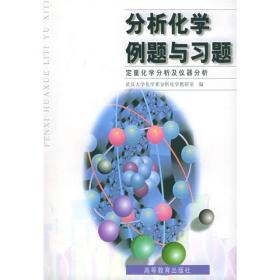
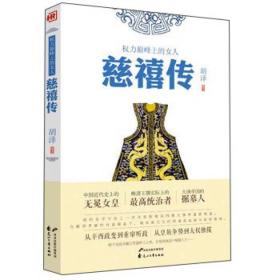
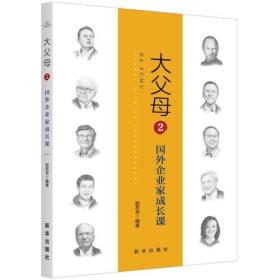
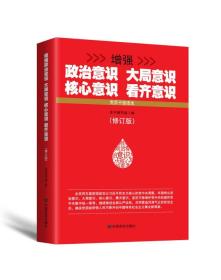



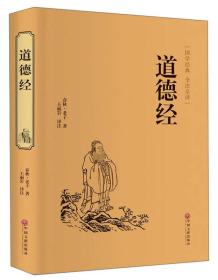

以下为对购买帮助不大的评价